
By Heather Bracken-Grissom, Ph.D - Assistant Professor, Department of Biological Sciences, Florida International University-Biscayne Bay Campus
July 26, 2015
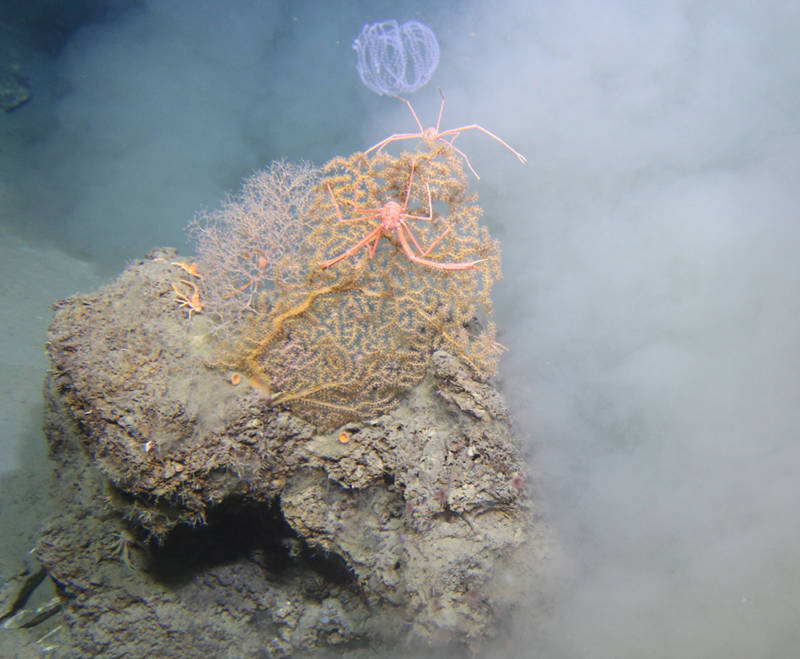
Decapod diversity on a single rock. Image courtesy of NOAA Bioluminescence and Vision on the Deep Seafloor 2015. Download larger version (jpg, 3.8 MB).
There is no other way to say it ... Glowing things are cool. We all love the 4th of July because of the amazing reds, blues, and greens that light up the sky in a dazzling array of shapes and colors. There is something almost magical and a bit surreal about a fireworks show that captures our imagination.
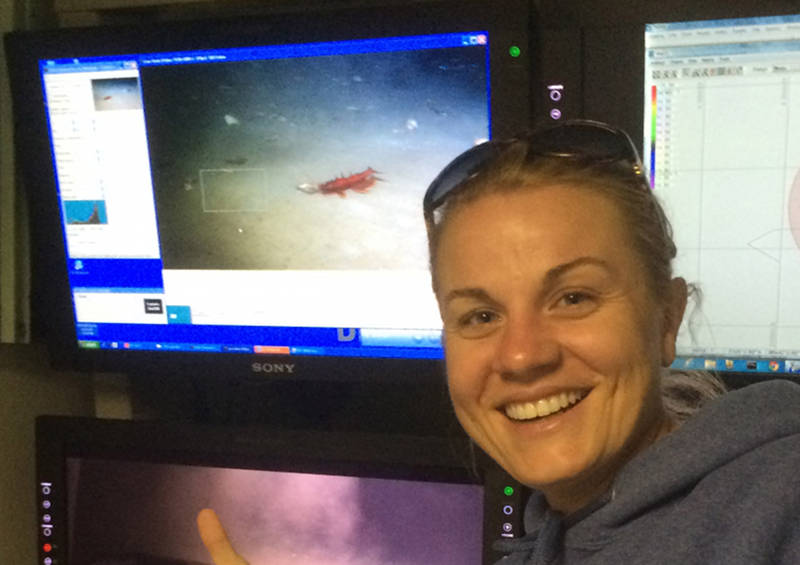
Me and my new friend—Plesiopenaeus armatus. Image courtesy of NOAA Bioluminescence and Vision on the Deep Seafloor 2015. Download larger version (jpg, 302 KB).
Now, what if I told you that deep under the sea, in complete darkness, a different kind of fireworks show is occurring...only this one is produced by organisms, happens every single night, and goes by the name bioluminescence?
This deep-sea show is not a celebration. The stakes are high. The generation of light by many organisms is essential to their survival. Around 80 percent of marine species depend on the generation of light for communication, feeding, and defense. Bioluminescence is known to have evolved 50 or more times among living species, suggesting the ability to produce light is advantageous to many organisms.
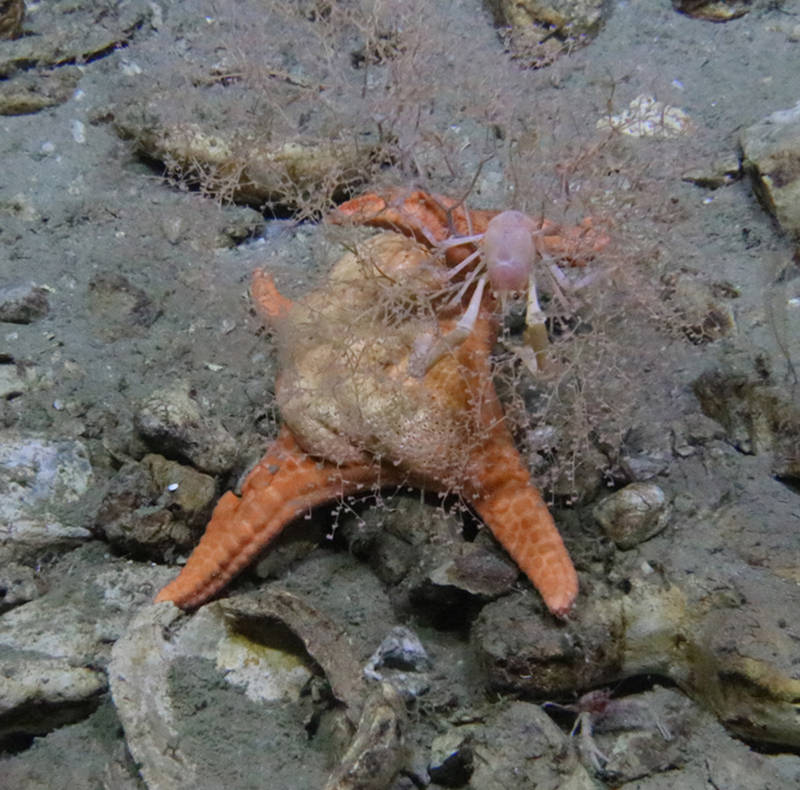
Uroptychus nitidus. Image courtesy of NOAA Bioluminescence and Vision on the Deep Seafloor 2015. Download larger version (jpg, 3.7 MB).
Sunlight is only visible to around 1,000 meters in the clearest ocean waters, so below 1,000 meters, bioluminescence is the ONLY source of light for deep-sea organisms. This confronts deep-sea organisms with a variety of challenges that they need to overcome. More specifically, this raises the questions "how do deep-sea organisms see in the dark and how can they detect bioluminescence?"
This is what my lab is especially interested in and we are exploring the eyes of deep-sea organisms to answer this question. We are using molecular methods and DNA sequencing to look at the genes responsible for light detection in crustaceans. These are the crabs, lobsters, and shrimps. We are especially interested in opsin genes, which play a significant role in light perception. Visual pigments absorb photons of light and, through a resulting phototransduction cascade, convert this light into an electrical signal that leads to vision. An opsin protein, along with a chromophore, is the primary component of any visual pigment and is therefore essential for light detection.
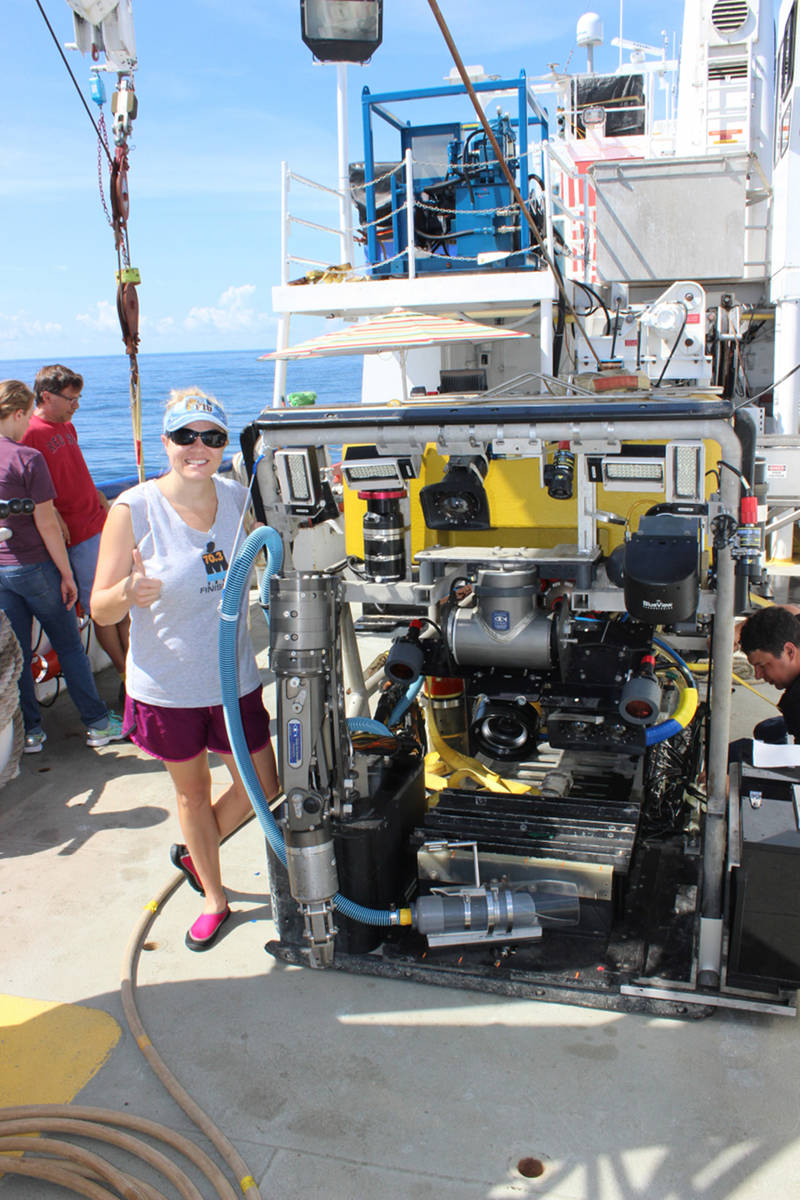
Heather with ROV Global Explorer. Image courtesy of NOAA Bioluminescence and Vision on the Deep Seafloor 2015. Download larger version (jpg, 5.3 MB).
So, the first thing we need to research this question is crustaceans! And collecting these animals is the fun part! Exploring the bottom of the sea floor at 3,000-6,000 feet has resulted in some amazing discoveries and heart-pounding experiences.
This is my first cruise that uses a remotely operated vehicle (ROV) to collect animals and it has been challenging. For example, finding and successfully sucking up shrimp is hard! Just ask Tony and Jamie, our ROV gurus, and I assure you will get the same response. We use a vacuum suction and many of our attempts have been unsuccessful due to the quickness and maneuverability of the sly little shrimp. However, the bigger brain always wins and we have been able to collect a variety of crabs, shrimp, and squat lobsters.
For anyone that does not believe you can have an adrenaline rush while "shrimp hunting" is all wrong. Maybe I am just a huge nerd, but the thrill of the hunt, the suspense of the collection, and the satisfaction of the species identification is awesome! Today, I took a picture with one of my favorite new friends. Some of the most abundant species we have collected include Gastroptychus spinifer, Munidopsis sp., Munida sp., Nematocarcinus sp., Heterocarpus ensifer, Glyphocrangon sp., and amphipods. We have found that many of these species tend to be associated with a very specific habitat type, such as a variety of corals, rubble mounds, and the sediment. It is also interesting to look at the different eye "varieties" shaped by millions of years of evolution.
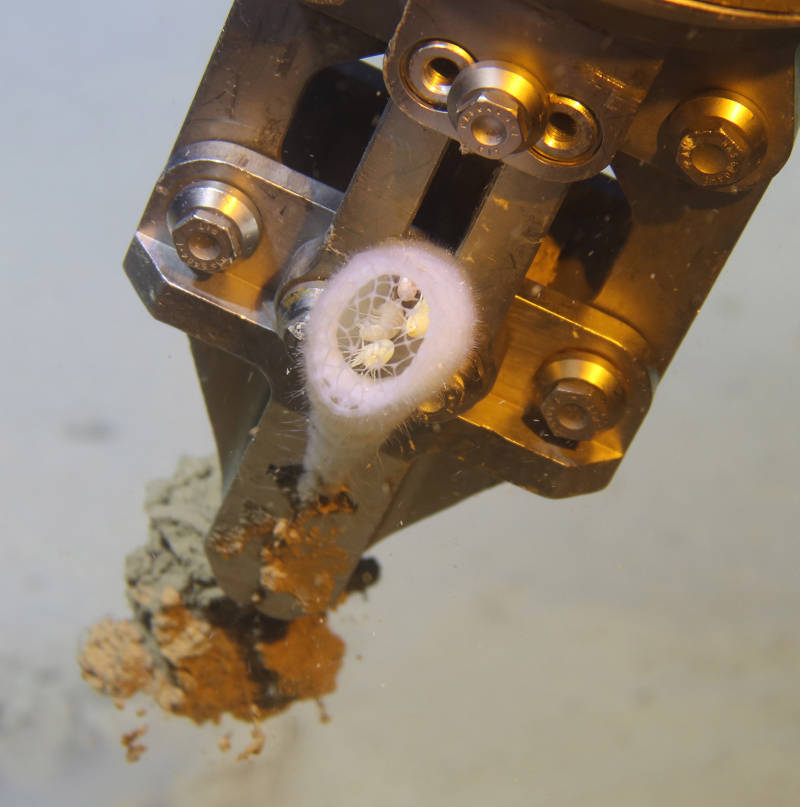
Heather with ROV Global Explorer. Image courtesy of NOAA Bioluminescence and Vision on the Deep Seafloor 2015. Download larger version (jpg, 1.5 MB).
After we collect the crustaceans we bring them into the lab and preserve the eyes in a solution called RNAlater. This solution will allow us to sequence the RNA, an important nucleic acid (like DNA) that allows us to identify the genes that are expressed at a specific point in time. As I mentioned before, we are really interested in opsin diversity. This will allow us to determine what genes the shrimp are using to detect bioluminescence. This, combined with the other research on the boat, will give us a better understanding behind how organisms "see in the dark"!
Many people ask me why I am attracted to the deep sea. For me the answer is easy...I am attracted to mystery, challenges, and unknowns of what is truly the last unexplored frontier on Earth. To imagine that I have seen a place or animal that no one else has seen is the ultimate reward. And if I can share these experiences with the world and ignite curiosity in young minds, there is nothing more satisfying...ok, ok...the show is pretty good, too.